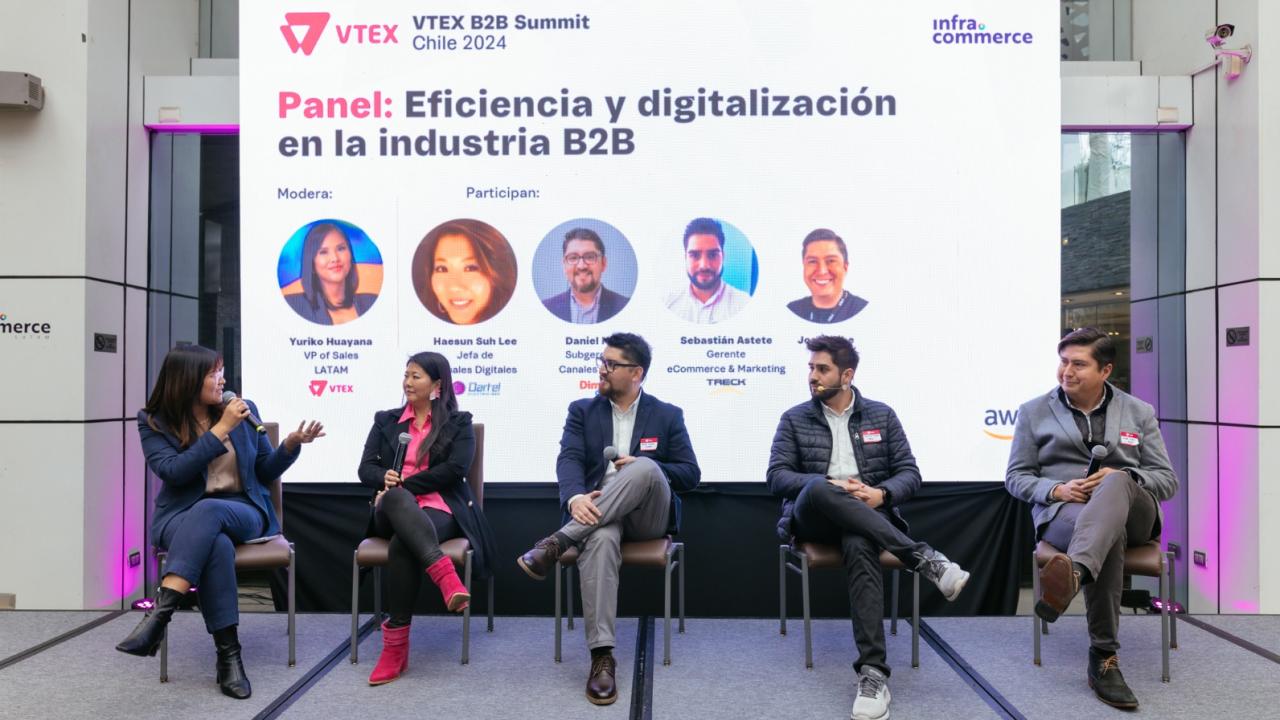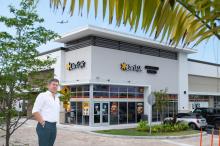
While B2C e-commerce will register sustained growth of 8% per year according to Statista, B2B, which involves companies buying from companies, is at least five years behind. This means a race almost against time in investments to incorporate new technologies and services.
Hugo Osorio, B2B e-commerce manager at WACAM Mondelez, known for brands such as Oreo and Vellden, stands in front of more than 200 people in Santiago, Chile. In front of an almost mesmerized audience, the Colombian gives his testimony, explaining how his sellers stopped serving winemakers in Peru, due to the confinements of the pandemic, with an immediate drop in sales.
With no time for regrets, the firm took its product offering to a website and began doing the same sales work it did in the field, but electronically. That meant that over the course of two months they were back to selling even more than before.
Since then, it has further digitized its processes, created promotions, premium memberships, refocused its sales force on new tasks, reached more than 150,000 businesses in different countries and has set the goal of generating new markets, new channels and models, to reach 20% of its target audience in 2030. All focusing on a B2B ( Business-to-Business ) e-commerce model.
This format, which involves the purchase and sale of goods or services between companies in a digitalized environment, is at a turning point in its digital transformation for our continent.
However, and according to the consulting firm McKinsey, when it comes to achievements and advances, this format presents a lag of approximately 50% compared to B2C ( Business-to-Customer ), where omnichannel and user experience have reached levels superior sophistication and permeability to the population.
“In B2B, each expense must be justified and explained in multiple stages, which adds complexity and can delay the adoption of more advanced technologies,” comments Yuriko Huayana, general manager of South America for VTEX to AméricaEconomía , as a possible explanation of the phenomenon. . That firm was the organizer of the B2B Summit to address the main trends that companies will face.
companies with the Business to Business business model throughout the continent.
According to the cloud e-commerce technology firm, companies face a double challenge in this area: not only will they have to change the way they carry out transactions and business relationships, but they will also need to adapt to a mobile format. first since, according to Gartner estimates, by 2025 80% of B2B sales interactions between suppliers and buyers will occur in digital channels.
It is also expected to reach the pace of B2C only in the next five years.
According to Malvina Rodríguez, Head of Sales South Latam at Infracommerce , a company of Brazilian origin that designs e-commerce platforms with online sales systems, payment solutions and delivery services, “Electronic commerce between companies is pending. Because they are in their infancy regarding B2C, given that during the pandemic many launched their online pages seeking not to lose the end consumer, but for the B2B segment they are only [doing it] now,” he indicates.
Rodríguez points out that, just as in commerce with people, all B2B work must be oriented towards greater sales conversion. “The challenge there is also the adaptation of emerging technologies for this industry, which is constantly evolving,” he highlights.
ANYPLACE, ANYWHERE
B2B e-commerce should focus on integrating automated systems, such as chatbots , to allow businesses to manage large volumes of purchase orders quickly and efficiently, without the need to mediate with sales executives, as is customary until now.
"This means that suppliers will be able to place immediate orders without depending on office hours, thus improving operational efficiency and significantly reducing costs," explains Yuriko Huayana.
This approach aligns with the growing trend toward “anyplace, anywhere,” optimizing communication and transactions between buyers and suppliers without the need for constant human intervention, with the dual goal of improving the customer experience. customer of a B2B business and also to increase its profitability.
“It is essential to see a real impact on aspects such as the purchase receipt and the frequency with which customers buy again. Otherwise, we would simply be using new technologies without taking advantage of their full potential,” explains Yuriko Huayana.
In this way, the technology firm proudly shows how sector specialists validate its work: according to the study carried out by Forrester Consulting on Total Economic Impact (TEI) in September 2023, VTEX delivered savings of US$ 5.8 million to merchants who migrated from legacy systems. Likewise, it allowed companies to obtain a return on investment (ROI) of 133%, improved efficiency in support and development up to 50% in savings in the third year, and marketing operations saw savings of 20% to 50% in three years.
External validation seeks to emphasize among firms that supply the retail or retail sector that they need to be aware of the latest trends, emerging technologies and market applications so that their business remains competitive. Especially if you think that more executives today are millennials or centennials , accustomed to a culture of self-care on digital platforms.
“In Latin America, the main challenge still lies in digitalization,” highlights Huayana. “The challenge [for B2B businesses] is adapting advanced technologies to satisfy the omnichannel buyer, especially in mobile environments.”
The positive side is that this 50% lag with respect to B2C represents an opportunity for companies seeking to innovate and differentiate themselves in a competitive market, he says.
That is where that old phrase 'Data is the oil of the future' gains value again, highlights the Infracommerce executive, pointing out that it is essential that the C-Level have a clear awareness of the need to invest in the adaptation of the latest technologies. to remain competitive in an increasingly demanding and digitally advanced market.
“Asking, what more can we do to make the consumer's shopping experience simple? You don't have to fill up because you can't put the card in at checkout . Or because you have to fill in the data again. Generate more ease in closing the purchase. In short: the digitization of all digital channels. The application of emerging technologies, such as augmented reality, Artificial Intelligence, livestream commerce and others. Then, cybersecurity. And finally, improve the consumer experience, generating different modalities that eliminate the friction they have when purchasing today,” he concludes.









